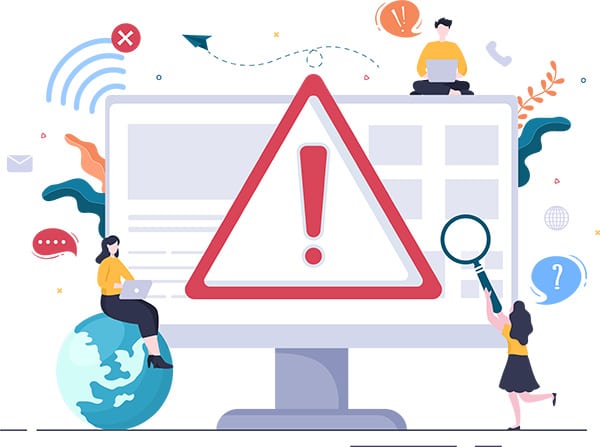Are you Submission Ready? FDA Medical Device Submission Tips & Tricks
August 08, 2022
Companies often come to us when they feel that they are ready to submit their medical device to the FDA for clearance or approval, but Medical Technology newcomers may not realize the amount of time and effort that truly goes into being "submission-ready." It is important not to underestimate the large amount of work that comes before the submission is sent to the FDA.
The more effort that a company puts into building a robust quality management system and design history file, the smoother the submission process will be. High-quality supporting documentation, combined with a comprehensive and well-written submission, helps to ensure a smooth FDA review cycle and a successful outcome for the company.
Gardner Law recently presented a CLE covering tips, tricks, and best practices from experienced regulatory attorneys for compiling and submitting an effective medical device submission to the FDA. Click here to view a recording of the program on YouTube.
Short on time to watch the video? What follows is a brief summary of the video presentation.
Steps to a Successful Medical Device Submission:
Step 1: Define your medical device
The team should define the product functionality and commercialization strategy early in the device development process, well before the device is manufactured and commercialized. This forethought will minimize the potential for challenges in the market, for example, with marketing claims or reimbursement. Listed below are three key questions that we recommend teams start with:
The threshold question: Is the product a medical device?
- Medical devices range in complexity from a tongue depressor to implantable, life-saving devices. Even if a company does not aim to bring a medical device to market, the intended use of the product may subject the product to regulation by FDA as a medical device.
- The company should continue to define the product throughout the development process to determine whether it falls under FDA's definition of a medical device, i.e., "an instrument, apparatus, implement, machine, contrivance, implant, in vitro reagent, or other similar or related article, including a component part or accessory which is . . . intended for use in the diagnosis of disease or other conditions, or in the cure, mitigation, treatment, or prevention of disease in man or other animals, or intended to affect the structure or any function of the body of man or other animals." See Section 201(h) of the Federal Food, Drug & Cosmetic Act.
What will the device do?
- This sounds like a simple question, but it is critical to define the device's functionality, which includes what it will do, and what it will not do. The answer to this question feeds into the device's intended use and also helps the technical team create product specifications.
What do you want to say about your device?
- Think about how the device will be marketed once it is commercialized. The desired marketing claims and positioning in the industry should drive the device design, product requirements, and planned testing and/or studies.
- Additionally, consider potential limitations on marketing claims that can be made. This will prevent issues down the road if the device approval/clearance does not support certain marketing claims which the company desires to make.
In addition to these three key questions, companies should consider other important inputs (not an exhaustive list):
Voice of the Business
- Consider important business perspectives during the device development process, e.g., reimbursement, clinical, legal. Reimbursement strategy should not be an afterthought; it should be embedded in the product development plan and strategy to ensure there is a path to coverage and payment once the device hits the market. Reimbursement challenges can be a barrier to sales and adoption, even with breakthrough technology.
Business objectives
- Consider business needs and objectives during the device development process, e.g., how quickly does the company want (or need) to get a product to market? Funding milestones often play a role for start-up companies. Some companies opt to obtain FDA clearance/approval for a single or limited indication at launch to shorten the timeline, with plans to add additional indications in the future.
Competitive environment
- The team should have a solid understanding of competitive technologies, the current standard of care, and clinical practice guidelines to identify where its device fits in the care continuum. This often dovetails into the reimbursement and sales strategy.
Voice of the Customer
- Of course, companies should consider input from patients, caregivers, and healthcare providers when developing a medical device. Clearly-identified user needs will inform design inputs and the rest of the device development process.
Step 2: Classify your medical device
It is critically important to correctly identify your product's regulatory classification. With 1,700+ different generic types of devices recognized by regulation, classifying the device correctly will avoid significant burden and delays. What follows are some tips for correctly classifying your device.
- Scour FDA's Product Code Classification Database, classification regulations, and competitive devices to get a better understanding of how similar devices or technologies are classified. There are often several product codes that could fit a device, and it is important to understand the nuances and differences between the different device types.
- If a company is unsure if the device falls within an existing product code/classification, we recommend seeking a second opinion. The company may also consider submitting a 513(g) Request for Information to FDA or a Pre-Sub (discussed further below).
- Once a product code and classification is determined, we recommend documenting the classification rationale in an internal memorandum for record-keeping purposes.
- FDA's Division of Industry and Consumer Education ("DICE") can be helpful in answering device classification questions: dice@fda.hhs.gov.
Step 3: Create the design history file
Many companies gloss over this vital step, but a compliant and comprehensive design history file is crucial to a successful submission. The design history file lays out the device development process, testing, and evidence, which is then woven together into a cohesive story by the submission drafter. What follows are tips for assembling a robust design history file to support the submission.
- A technical team that is experienced with FDA requirements is critical to create a robust design history file in accordance with FDA's design control requirements and the company's quality management system. This includes creating specifications and drawings, designing test protocols/methods, executing verification & validation testing, writing reports, etc. This is not an easy or quick task, and should not be underestimated. We recommend allotting sufficient time in the project timeline for these activities.
- It is imperative to include Regulatory Affairs in the creation of the design history file, testing strategy, reports, etc., so that the resulting documents meet FDA expectations and clearly explain the company's thought process (e.g., tell the story) to FDA in the submission. Regulatory Affairs should review and approve all documents that will be submitted to FDA. This will save time during the submission drafting process (described further below).
- There is some submission work that can be done in parallel to testing, but the bulk of the submission writing will begin after the design history file (and successful testing) is complete.
Step 4: Draft and compile the submission
This step requires significant time and focus. Before the submission drafting begins, the submission drafter must re-review each design history file document. The submission drafter will work closely with the technical team and company management, as needed, to compile the story and proactively address any perceived gaps that FDA may identify. We recommend setting aside plenty of time to write. What follows are tips for drafting and compiling a comprehensive and efficient submission.
- The submission is the culmination of a company's efforts, and as such, there will always be pressure to draft and submit as quickly as possible. Regulatory Affairs should set submission timing expectations with the team upfront. For example, it is reasonable to allot 6-8 weeks in the project schedule to compile and submit a Traditional 510(k). Issues will inevitably come up during the submission compilation process that must be addressed and will take time away from drafting/compiling the submission. Rushing through submission writing is not a good strategy.
- Use all available tools and resources at your disposal to draft a comprehensive submission that meets FDA expectations, e.g., review and follow all applicable FDA guidance, regulations, consensus standards, review other (publicly-available) submissions and 510(k) summaries, FDA webinars & modules, utilize the Q-Submission process (Pre-Subs are discussed further below), utilize FDA's Breakthrough Device Program or Safer Technologies Program (SteP), as applicable.
- We recommend anticipating what FDA will expect to see in the submission package, and then planning accordingly to provide it in the initial submission. There may be strategic decisions to be made during the submission process, but if the company chooses to submit "at risk" (e.g., opting to forgo a certain test that FDA may expect), it should be a fully-informed, cross-functional decision supported by sound justification.
- When it comes to submission writing and reviews, the more eyes the better. Utilize internal and external reviewers and subject matter experts to get feedback on the submission.
- The goal is to translate technical documents into an easy-to-follow story for the FDA. This is an acquired skill, and we recommend utilizing external experts if needed.
- Do not forget the details. When the submission is complete, carefully check for proper spelling, grammar, formatting, table/figure layout and labels, and hyperlinks.
- Use all available FDA checklists when compiling and reviewing the submission. For example, use FDA's Refuse to Accept Policy and associated checklists.
Step 5: Submit to FDA
These final steps may seem administrative in nature, but they are critical to ensure that the submission passes FDA's acceptance review process so that it can proceed to substantive review. What follows are tips and tricks related to the submission process and beyond.
- Do not forget to pay the submission fee (user fee) to the FDA prior to submission. Failure to pay the user fee will result in a submission hold (delays).
- Plan ahead to take advantage of FDA's Small Business Determination (SBD) Program if you qualify.
- Select your submission method: eCopies are still accepted, but CDRH now accepts electronic submission uploads through its Customer Collaboration Portal (CCP).
- The eCopy process is familiar, but can be tedious. The CCP electronic submission process is new, but it may prove to be simpler.
- Regardless of the submission method, we recommend building 1-2 days into the submission timeline to allow for troubleshooting during this final step.
- Avoid taking "risks" in the marketplace while under FDA review. Market missteps may delay submission review and/or tarnish the company's future relationship with FDA.
- Do not promote products or uses before clearance/approval.
- Do not make claims or imply safety or effectiveness for an investigational device.
- It is typical to receive questions, deficiencies, or requests for additional information from FDA while they are reviewing your submission. Be prepared to address them promptly and efficiently with the team.
- Avoid being defensive.
- If issues arise:
- First, work with reviewer before escalating to management.
- Retain records of all FDA communications, phone calls, timelines, etc.
- Use the CDRH Ombudsman if needed, but acknowledge that this process may not solve the issue.
- Consider Requests for Supervisory Review (Appeals), 21 CFR 10.75, if needed.
Step 6: Continued compliance
Attention to regulatory compliance does not end when you obtain clearance or approval for your medical device. It is imperative to prepare the team to meet post-market obligations.
- All claims made about the product must be:
- Accurate, truthful and not misleading
- Fair and balanced with information about benefits and risks
- Supported by substantial evidence and/or clinical experience
- Consistent with FDA-approved/cleared product labeling
- FDA expects qualified Medical, Legal and Regulatory Affairs professionals to review all marketing and promotional materials prior to use. We recommend establishing and documenting a review and approval process before launch materials are prepared.
- Plan accordingly to support post-market change control and corresponding regulatory assessments and submissions.
FDA's Pre-Sub Program
Is a Pre-Sub really necessary? This is a common question that we receive. We find that companies vary in their perspective on the answer to this question and how they view the value of FDA's Pre-Sub Program. Some companies treat it as a mandatory step, while others completely avoid it. There is no "right" answer when it comes to whether a Pre-Sub is necessary; we find that it often depends on the nature of the company's questions and whether FDA feedback would result in a pivotal change to the submission or commercialization strategy. Below we have outlined some advantages and disadvantages of the Pre-Sub Program for consideration.
Advantages of the Pre-Sub Program:
- Companies have the opportunity to receive valuable FDA feedback on specific, defined questions before the premarket submission is filed. This may minimize questions or deficiencies during the submission review process.
- The Pre-Sub Program affords companies with the opportunity to interact with FDA reviewers and build relationships prior to filing the premarket submission.
- The Pre-Sub Program does not require FDA user fees.
- While the Pre-Sub Program may take time, it also presents an opportunity to save time (and resources) in the future. FDA may agree on a path forward for a submission. This means the submitter has line-of-sight to FDA expectations, which should increase the likelihood of gaining clearance/approval.
- Companies will receive written Pre-Sub feedback, which creates a documented "record" with FDA. Most companies gladly take FDA up on the opportunity to have a 1-hour teleconference with FDA, which helps to build rapport.
Disadvantages of the Pre-Sub Program:
- The Pre-Sub process takes time, which takes focus and resources away from device development process and pre-submission activities.
- The Pre-Sub feedback received from FDA may not fully address or resolve the questions raised. It could actually raise more questions, since they often include additional topics to consider, even if they are not directly related to the questions posed by the company.
- FDA will provide high-level feedback, but will reserve the right to review the full supporting data during review of the premarket submission.
- Pre-Sub Feedback from FDA is not "binding."
- Pre-Sub teleconferences are limited to 1 hour in duration, which does not allow much time to discuss complex issues.
- Pre-Sub feedback is limited in scope to a handful of predefined questions and topics.

So, what happens to companies that do not follow FDA regulations?

FDA has a variety of enforcement tools (see below) at their disposal if they determine that a company has violated FDA regulations. The most commonly-cited violations are misbranding and adulteration.
- Examples of misbranding violations (not exhaustive):
- Something is wrong with the words used to describe/promote the device
- Promotion of unapproved devices, uses, features
- False, misleading, untruthful, not balanced with risks
- Inadequate directions for use
- Examples of adulteration violations (not exhaustive):
- Something is wrong with the way the product is made
- Device company with no or inadequate QMS
- Manufacturing issues
Here are some example enforcement mechanisms the FDA may choose to utilize (not exhaustive):
- Advisory/Informal Compliance Correspondence
- FDA Form 483/Untitled letter/Warning letter
- Import alerts, alerts, or refusals
- Administrative detention/condemnation
- Recalls
- Bad publicity
- Debarment or disqualification (Sec. 306 of the FD&C Act)
- Product seizure
- Preliminary injunction/Permanent injunction
- Civil monetary penalties
- Criminal prosecution
- Consent decree
Have questions about FDA submissions? Contact us.
Information provided on this website is not legal advice. Communications sent to or from this site do not establish an attorney-client relationship. © 2022 Gardner Law. All Rights Reserved.